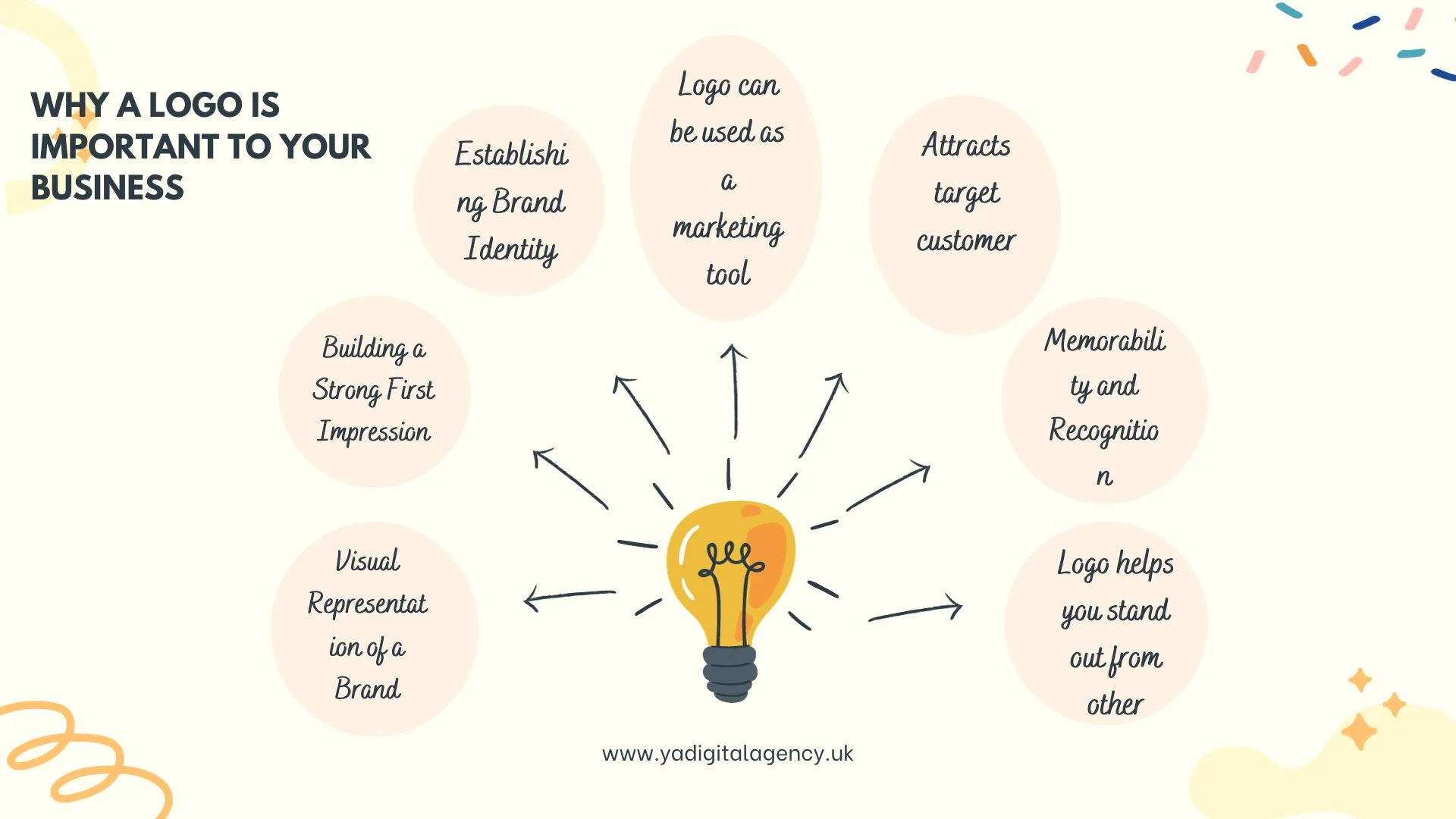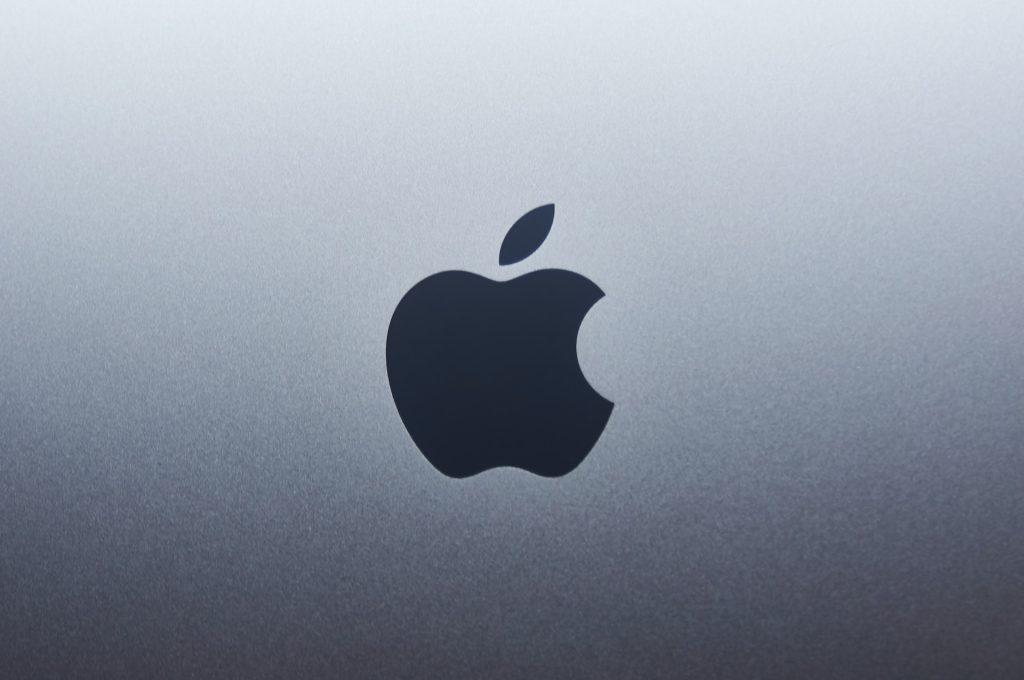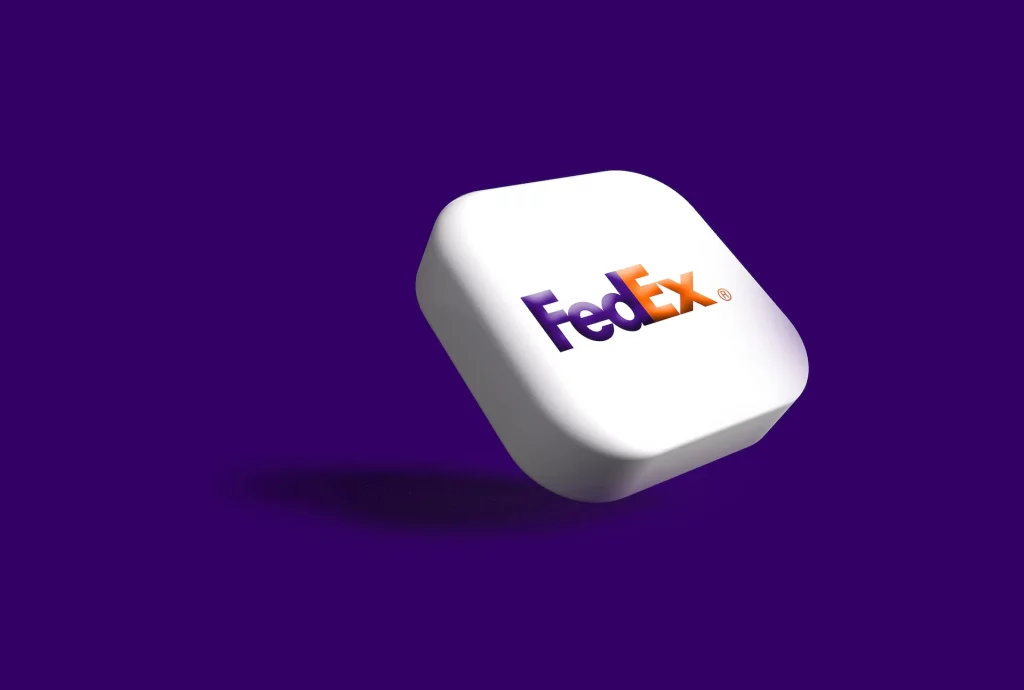
7 reasons why a logo is important to your business
- yadigitalukltd
- January 4, 2024
- logo design
- 0 Comments
“Hey there! Have you ever wondered why a logo is important to your business? In this topic, we’ll dive into this question from the ground up. So, get ready to discover the ins and outs of why having the right logo is essential for your business’s success! lets knows the importance of a logo”
Definition of a logo:
A logo is a symbol used to represent a company, brand, product, or organization. Its main purpose is to create a memorable and immediate association with the brand it represents. A logo helps to foster brand recognition by providing a visual shortcut that helps consumers identify and differentiate one brand from others in a highly competitive market.
Historical Evolution of Logos
The evolution of logos throughout history is an interesting journey through the world of design and branding. In ancient times, logos were often symbols and marks used by craftsmen to sign their creations. The Industrial Revolution brought a significant change with the rise of trademarks, which emphasized the uniqueness and ownership of products. In the 20th century, well-known companies such as Coca-Cola and IBM established iconic logos that set the foundation for modern corporate identity. Today, logos have become an essential aspect of the business world, reflecting the brand identity and cultural and design trends of each era.
Visual Representation of a Brand
A logo serves as the visual face of a brand, capturing its essence in a single, distinctive image. It’s like the brand’s signature in the visual world. Every element of the logo, from colours to shapes, is chosen with care to convey specific messages about the brand. Think of it as the brand’s unique language – It’s the visual representation that helps people quickly identify and remember a brand, making it an integral part of the brand’s identity and overall communication strategy.

Nike Swoosh
The Nike Swoosh is a quintessential example of a logo serving as a powerful visual representation of a brand. The simplicity of the design carries profound significance, making it one of the most iconic and recognizable logos globally.
Building a Strong First Impression
A logo acts as a brand’s first impression, conveying professionalism, trust, and values in a single glance. It’s like a friendly handshake, setting the tone for a positive brand experience and fostering a connection with the audience.

Apple’s logo
Apple’s iconic logo is a prime example of how a brand can build a strong first impression through a simple yet powerful visual identity. The Apple logo, featuring a partially bitten apple with a clean, smooth silhouette, has become synonymous with innovation, quality, and user-friendly technology.
Establishing Brand Identity
A logo is instrumental in establishing a brand’s identity by encapsulating its unique personality and values in a visual mark. It serves as the face of the brand, creating an immediate and recognizable connection with the audience. Like a signature, a well-crafted logo reinforces brand consistency across various platforms, from products to marketing materials. It becomes the visual shorthand for the brand’s story, creating a sense of familiarity and trust. In essence, a logo is the cornerstone of brand identity, allowing consumers to quickly identify, relate to, and form a lasting bond with the brand.
Starbucks’ Siren Logo
Starbucks’ Siren logo is an exemplary demonstration of how a logo can play a pivotal role in establishing and fortifying a brand’s identity. The distinctive image of a twin-tailed mermaid, or Siren, has become an iconic symbol associated with one of the world’s premier coffeehouse chains.
Memorability and Recognition
A logo’s magic lies in its ability to be memorable and instantly recognizable. A well-designed logo imprints itself in the minds of consumers, creating a lasting impression. Through clever use of colours, shapes, and distinctive elements, a logo becomes a visual cue that triggers recall effortlessly. This memorability is a key player in the branding game, ensuring that customers easily identify and remember a brand in a crowded market.
McDonald’s Golden Arches
McDonald’s Golden Arches logo is a prime example of how a logo can achieve memorability and instant recognition, becoming an iconic symbol in the fast-food industry.
Logo helps you stand out from others
A unique logo helping a business stand out from the crowd. In a sea of competitors, a distinct and well-crafted logo becomes a beacon, drawing attention and setting a brand apart. It’s a visual representation of a brand’s unique identity and values, allowing it to shine in a memorable way. A thoughtful logo design captures the essence of a business, enabling it to carve a niche in the minds of consumers. This distinctiveness not only aids in immediate recognition but also contributes to a brand’s long-term visibility, ensuring it remains distinguishable and memorable in the ever-evolving market landscape.

FedEx’s Hidden Arrow
FedEx’s logo is a brilliant example of how a subtle yet clever design element can help a logo stand out from others and create a memorable impact.
At first glance, the FedEx logo appears to consist of simple purple and orange letters spelling “FedEx.” However, upon closer inspection, the logo reveals a hidden arrow formed by the negative space between the letters ‘E’ and ‘X.’ This subtle and ingenious design element not only adds a layer of sophistication but also conveys a message of forward movement, speed, and efficiency – all qualities associated with a reliable courier service.
Logo can be used as a marketing tool
A logo is a potent marketing tool, going beyond visual identification to reinforce brand messaging consistently. When strategically incorporated into promotional materials and advertisements, it enhances brand recall and serves as a focal point in marketing campaigns. A well-designed logo becomes a versatile and impactful element in a broader marketing strategy, contributing to increased brand visibility and effective communication.
Attracts target customer
A well-designed logo attracts target customers by visually embodying a brand’s identity and values. It serves as a magnet, resonating with the preferences of the intended audience and establishing an immediate connection. In essence, a compelling logo functions as a silent ambassador, drawing in and engaging the desired customer base.
Lululemon’s Abstract “Omega” Logo
Lululemon’s abstract “Omega” logo is a compelling example of how a logo can effectively attract a target customer base, especially in the realm of athletic and lifestyle apparel.
The logo features a stylized, abstract rendition of the Greek letter omega (Ω) with a dot above it, resembling an abstracted person with outstretched arms. This design subtly conveys notions of balance, flexibility, and unity – all key elements associated with the brand’s yoga-inspired and athleisure products.
FAQs
1. What is the purpose of a logo?
- A logo serves as a visual representation of a brand, conveying its identity, values, and essence. It is a powerful tool for brand recognition and differentiation.
2. How does a logo contribute to brand identity?
- A well-designed logo helps establish a brand’s identity by encapsulating its core values, creating a memorable visual mark, and fostering a cohesive and recognizable brand image.
3. Can a logo help a brand stand out from others?
- Yes, a unique and distinctive logo can set a brand apart from competitors, creating a memorable and recognizable presence in the market.
4. How does a logo attract target customers?
- A logo attracts target customers by visually communicating the brand’s values, resonating with the preferences of the target audience, and creating a positive and relatable image.
5. What makes a logo memorable?
- Memorable logos often have simplicity, uniqueness, and clever design elements. Hidden meanings, clever use of negative space, and distinctive colour choices contribute to memorability.
Conclusions:
In conclusion, a logo plays a pivotal role in shaping a brand’s identity and influencing how it is perceived by the audience. A well-crafted logo contributes to brand recognition, helps the brand stand out in a crowded market, and attracts target customers by resonating with their preferences and values. The memorability of a logo is achieved through thoughtful design elements that create a lasting impact on the audience. Ultimately, a successful logo goes beyond aesthetics; it becomes a symbol that embodies the essence and aspirations of a brand, leaving a lasting impression on consumers.
